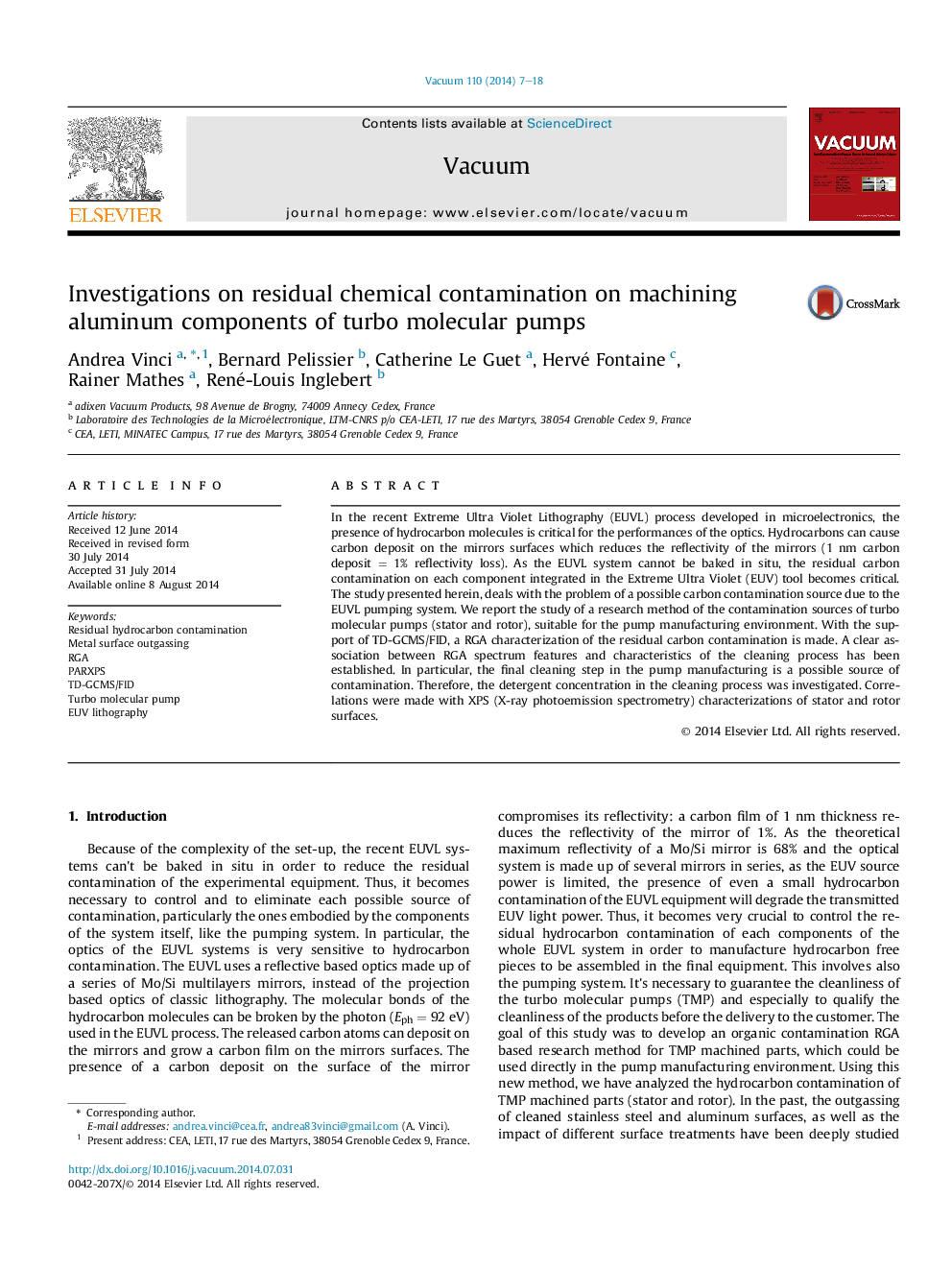| Article ID | Journal | Published Year | Pages | File Type |
|---|---|---|---|---|
| 1689569 | Vacuum | 2014 | 12 Pages |
•RGA based research method of the organic contamination sources was developed.•Contamination processes occurring during the production of TMP pieces were studied.•An “in vitro” copy of the industrial cleaning process was developed.•Relation between detergent concentration and residual contamination was established.•Correlations with XPS characterizations of stator and rotor surfaces were made.
In the recent Extreme Ultra Violet Lithography (EUVL) process developed in microelectronics, the presence of hydrocarbon molecules is critical for the performances of the optics. Hydrocarbons can cause carbon deposit on the mirrors surfaces which reduces the reflectivity of the mirrors (1 nm carbon deposit = 1% reflectivity loss). As the EUVL system cannot be baked in situ, the residual carbon contamination on each component integrated in the Extreme Ultra Violet (EUV) tool becomes critical. The study presented herein, deals with the problem of a possible carbon contamination source due to the EUVL pumping system. We report the study of a research method of the contamination sources of turbo molecular pumps (stator and rotor), suitable for the pump manufacturing environment. With the support of TD-GCMS/FID, a RGA characterization of the residual carbon contamination is made. A clear association between RGA spectrum features and characteristics of the cleaning process has been established. In particular, the final cleaning step in the pump manufacturing is a possible source of contamination. Therefore, the detergent concentration in the cleaning process was investigated. Correlations were made with XPS (X-ray photoemission spectrometry) characterizations of stator and rotor surfaces.
